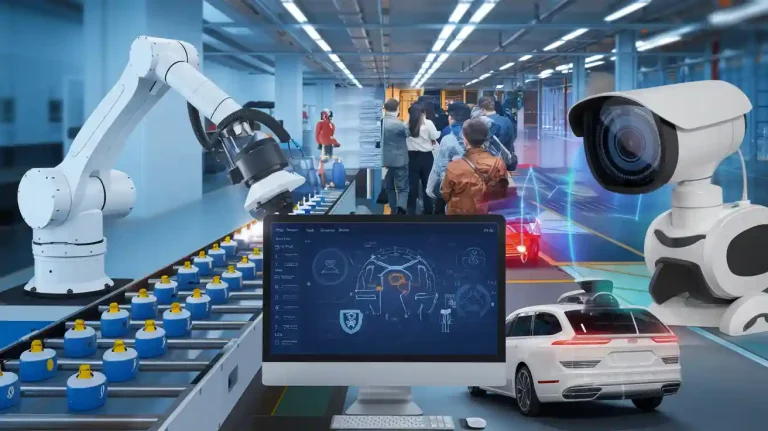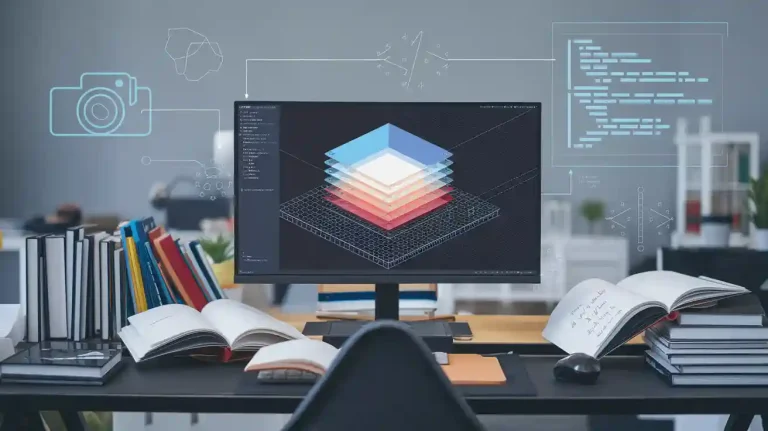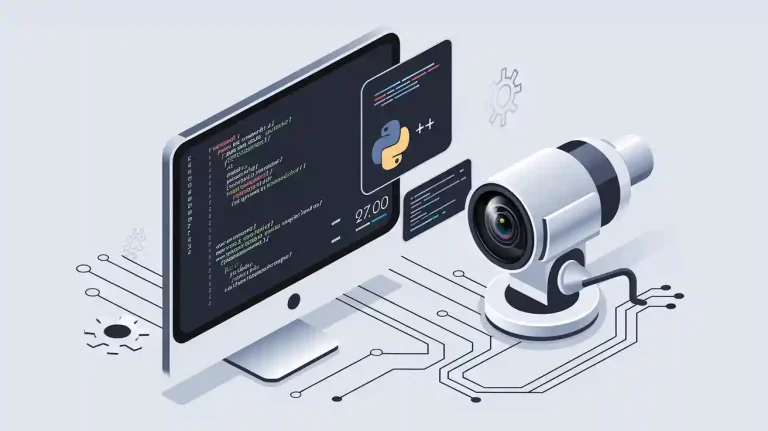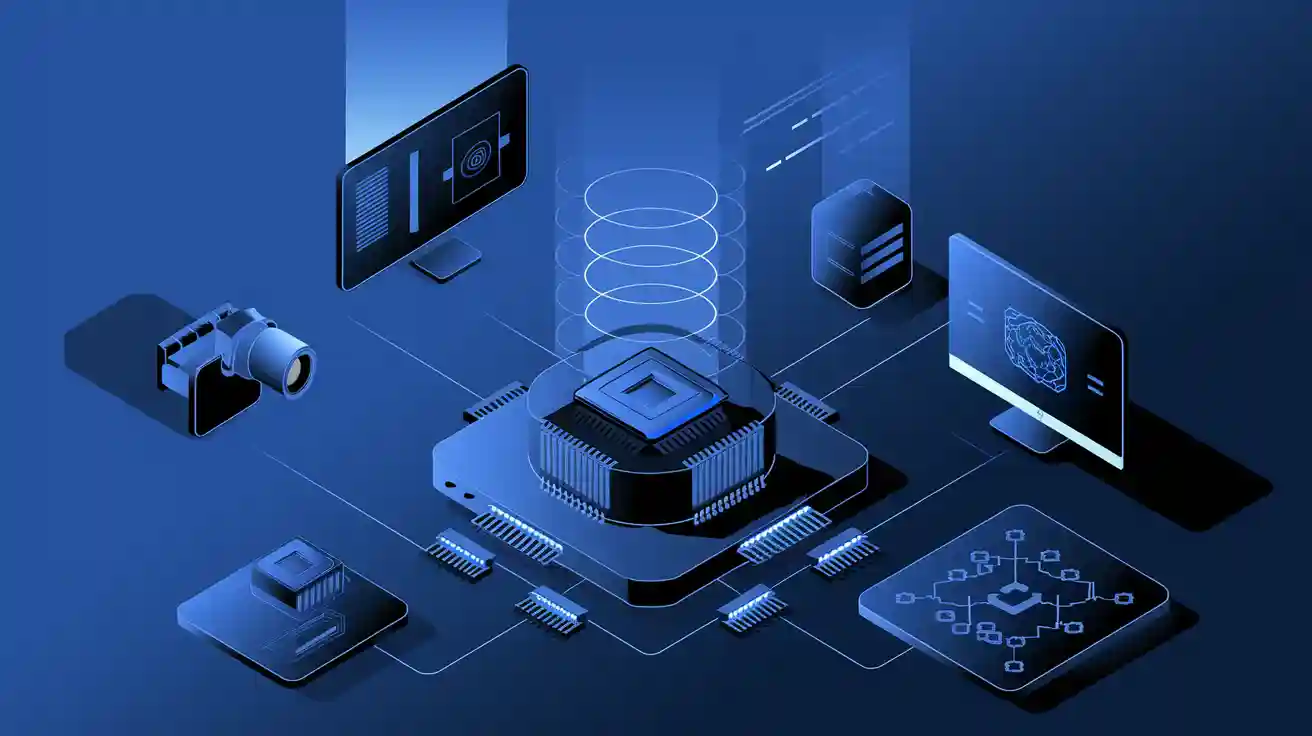
A Caffe machine vision system in 2025 requires these essential parts:
- Software core (Caffe)
- Model zoo with pretrained models
- Data pipeline for image handling
- Hardware such as cameras, lighting, and GPUs
- Training and monitoring tools
- Integration APIs
- Security and compliance features
Each part in a machine vision system supports tasks like image acquisition, segmentation, and feature extraction. Cameras and lighting capture high-quality data, while GPUs process images for machine vision applications in real time. The system uses ai to detect and grade fruits, monitor plant health, and guide autonomous machines. These ai vision systems help industries and farms handle changing conditions, ensuring reliable machine vision solutions.
Key Takeaways
- A Caffe machine vision system combines powerful software, pretrained models, data pipelines, hardware, and integration tools to deliver fast and accurate image recognition.
- Pretrained models from the model zoo save time and improve accuracy by allowing quick adaptation to new tasks through transfer learning.
- Efficient data pipelines and image augmentation techniques help the system learn better and handle real-time image processing smoothly.
- High-quality cameras, lighting, GPUs, and edge devices ensure clear image capture and fast processing for reliable machine vision in industrial and agricultural settings.
- Strong security, compliance features, and APIs protect data, support regulations, and enable easy integration with other machines and software.
Caffe Machine Vision System Core
Framework Overview
A caffe machine vision system uses a powerful software core to handle complex image tasks. The core supports many deep learning architectures. These include convolutional neural network models like CNNs, RCNNs, and LSTMs. The system uses modular design, which helps engineers build and deploy vision models quickly. Caffe runs on both GPUs and CPUs. It uses Nvidia cuDNN and Intel MKL libraries for fast processing. The framework is written in C++ and offers a Python interface. This balance of speed and usability makes it a strong choice for machine vision system projects.
The caffe machine vision system can process millions of images each day. It handles image classification, segmentation, and object recognition with high accuracy. The static architecture uses prototxt files to define layers. This setup gives the system speed and reliability. The focus on convolutional neural network models helps the system excel at vision tasks in ai and industrial settings.
Tip: Caffe’s modularity and speed make it ideal for fixed pipelines in deep learning and machine vision system applications.
Key Features in 2025
By 2025, the caffe machine vision system includes new features that boost its capabilities. The system now integrates with ONNX, which improves interoperability with other deep learning frameworks. Enhanced GPU support allows the system to use the latest hardware for faster training and inference. The introduction of Caffe2, now merged into PyTorch, enables efficient deployment on edge devices and mobile machines.
Official Docker containers simplify deployment across different platforms. The system also offers new APIs and deployment libraries. These tools help developers add trained convolutional neural network models to ai vision systems for real-time recognition. Community contributions keep the system up to date and innovative. While other frameworks like TensorFlow and PyTorch offer more flexibility, Caffe remains a top choice for deep learning, convolutional, and neural network-based machine vision system solutions. Its focus on speed, modularity, and convolutional neural network performance supports ai, recognition, and training needs in industrial and agricultural machine vision system applications.
Model Zoo and Pretrained Vision Models
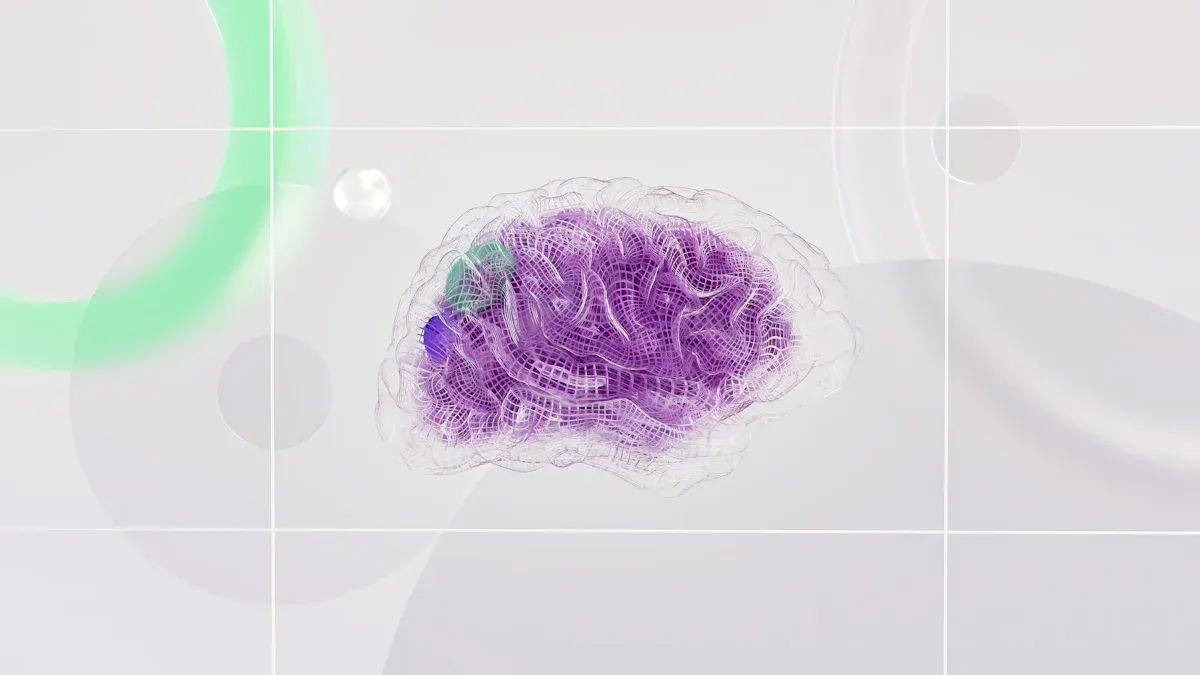
Pretrained Model Benefits
A machine vision system in 2025 relies on a rich model zoo filled with pretrained convolutional neural network models. The Caffe model zoo offers a wide range of deep learning architectures. These include AlexNet, VGG, GoogleNet, YOLO, and SqueezeNet. Each model supports different vision tasks such as image classification, object detection, and segmentation. The diversity in the model zoo helps engineers choose the right convolutional neural network for their specific machine vision system needs.
- The model zoo contains:
- Lightweight models like SqueezeNet and MobileNet for mobile and edge machine deployment.
- Deep networks such as ResNet with over 150 layers for complex recognition and detection.
- Models like CaffeNet and RCNN_ILSVRC13 for image classification and object detection.
Pretrained models save time and resources. Developers can use transfer learning to adapt these convolutional neural network models for new vision tasks. Fine-tuning a pretrained model often leads to high accuracy in image recognition tasks, even in new environments. For example, SqueezeNet and GoogLeNet can reach over 90% accuracy after rapid fine-tuning. The model zoo also supports strong generalization, which means the system performs well on new data.
Note: Smaller pretrained models offer a good balance between accuracy and size, making them ideal for ai vision systems in resource-limited settings.
Deployment Acceleration
Pretrained convolutional neural network models accelerate the deployment of deep learning applications. Developers do not need to train models from scratch. They can start with a strong baseline, such as GoogLeNet or AlexNet, trained on large datasets like ImageNet. This approach reduces the amount of training data and time needed for new machine vision system projects.
- Transfer learning allows quick adaptation of models for specific recognition or detection tasks.
- Customizing pretrained models for fewer classes shortens training cycles.
- Faster training leads to quicker proof of concept and market readiness.
- Reduced hardware requirements make it easier to deploy deep learning models on different machines.
Caffe2, now part of the Caffe ecosystem, supports GPU acceleration and efficient image preprocessing. The system can run on mobile, IoT, and edge devices, enabling real-time recognition in industrial and agricultural settings. Community contributions keep the model zoo updated, improving the quality and variety of convolutional neural network models for ai and deep learning applications.
Data Pipeline and Preprocessing
Data Ingestion
A machine vision system depends on a reliable data pipeline. The system starts with data ingestion, which collects images from cameras or storage devices. Engineers design the pipeline to handle large volumes of image data for deep learning tasks. The pipeline must support real-time image processing for applications like object detection and image classification. High-quality data ensures that convolutional neural network models learn accurate patterns for recognition and detection.
The system uses optimized data loaders to move images quickly into memory. These loaders support batch processing, which helps deep learning models train faster. Asynchronous execution and parallelism in the pipeline increase throughput and reduce latency. Tools such as trtexec help measure performance, allowing engineers to fine-tune the pipeline for maximum efficiency. By combining data and model parallelism, the system can cut training time by almost half compared to traditional methods. This approach leads to faster deep learning model deployment and better resource use.
Efficient data ingestion forms the backbone of every deep learning vision project. It ensures that convolutional neural network models receive the right data at the right time for learning and recognition.
Augmentation and Preparation
After ingestion, the system prepares images for deep learning. Data augmentation increases the diversity of training data. This step helps convolutional neural network models learn to recognize objects under different conditions. Augmentation techniques improve model robustness and accuracy in vision tasks.
| Data Augmentation Technique | Description | Purpose / Effect |
|---|---|---|
| Rotation and Flipping | Rotate images by angles; flip horizontally or vertically | Helps models learn invariance to orientation changes |
| Color Jittering | Randomly adjust brightness, contrast, saturation | Improves robustness to different lighting conditions |
| Random Cropping | Randomly crop portions of images | Forces model to focus on relevant features regardless of position |
| CutMix | Cut a portion of one image and paste onto another | Exposes model to new feature combinations |
| MixUp | Mix two images by weighted averaging pixel values | Creates new training examples to improve robustness |
| Random Erasing | Randomly remove parts of an image | Helps model recognize objects despite occlusion |
| GAN-based Augmentation | Generate new images using GANs | Provides diverse synthetic examples to enhance robustness |
The system applies these techniques to boost deep learning performance. For example, rotation and flipping teach convolutional neural network models to recognize objects from any angle. Color jittering prepares the model for different lighting. CutMix and MixUp create new combinations, making the model stronger at detection and classification. GAN-based augmentation generates synthetic images, expanding the dataset for deep learning.
Image processing steps like normalization and resizing follow augmentation. These steps ensure that all images fit the input requirements of convolutional neural network models. Proper preparation supports accurate object detection, image classification, and recognition in real-world machine vision applications.
Machine Vision System Hardware
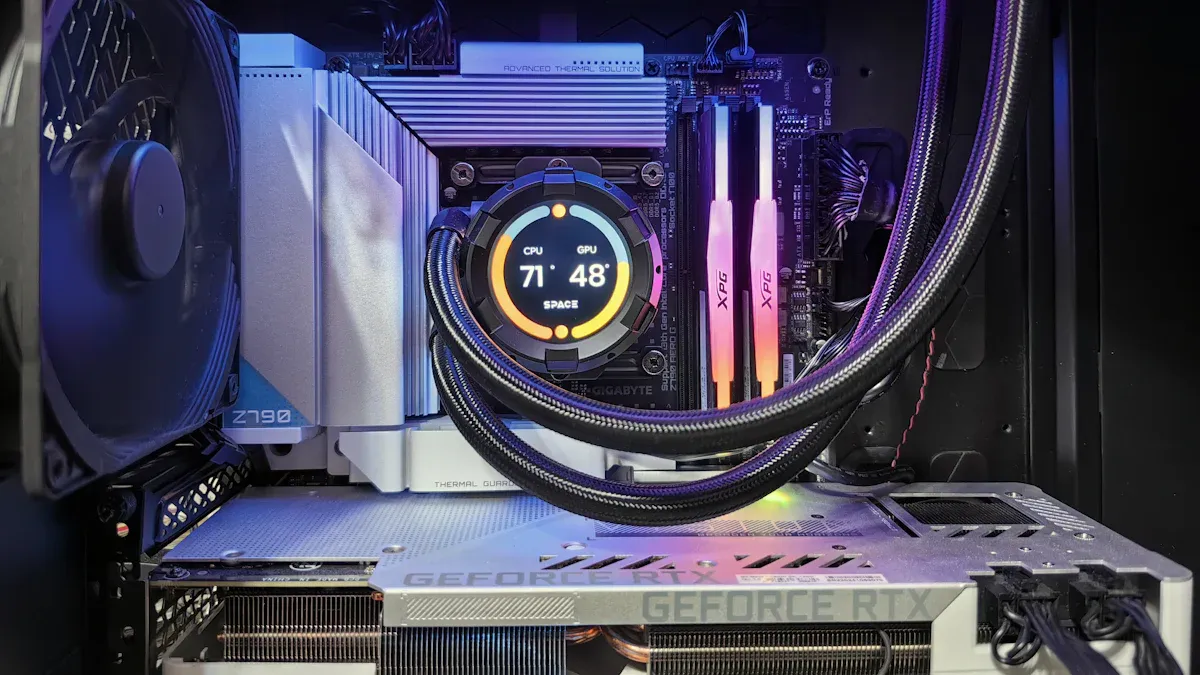
Cameras and Lighting
A machine vision system depends on high-quality cameras and proper lighting to capture clear images for analysis. Engineers select cameras based on the needs of each application. For example, coffee bean inspection uses area scan cameras to check bean color and size. Industrial automation often uses line scan or 3D cameras to inspect moving parts on conveyor belts. The table below shows common camera and lighting options for machine vision applications:
| Category | Examples / Types |
|---|---|
| Camera Types | Area Scan, Line Scan, LWIR, SWIR, NIR, 3D cameras |
| Interfaces | GigE, USB3, USB 2.0, Camera Link, CoaXPress, Camera Link HS |
| Manufacturers | Teledyne DALSA, Allied Vision, IDS Imaging, Teledyne Lumenera, SVS-Vistek, Mikrotron, JAI/Pulnix |
| Lighting | Various machine vision lighting solutions |
Lighting plays a key role in image processing. Engineers use different lighting setups to reduce shadows and highlight features. Proper lighting helps the system detect defects or grade products with high accuracy. In automated inspection, the right combination of camera and lighting ensures reliable results, even in changing environments.
Tip: Rugged, weather-resistant cameras and lighting help maintain performance in harsh agricultural settings.
GPUs and Edge Devices
Compute hardware powers the image processing and deep learning tasks in a machine vision system. GPUs handle large amounts of data quickly, making them essential for real-time vision tasks. Edge devices, such as NVIDIA Jetson boards, bring processing closer to the machine, reducing the need for cloud connections. This setup improves speed and reliability in remote or rural areas.
| Specification Aspect | Impact on Performance | Examples / Details |
|---|---|---|
| GPU Architecture | Advanced GPU designs with AI accelerators boost inference speed and real-time processing. | NVIDIA Jetson Orin Nano, Orin AGX, Xavier NX with Tensor cores |
| Memory Capacity | More memory allows complex models and larger batch sizes for better real-time capabilities. | Entry-level boards with less memory limit model size and speed |
| Power Efficiency & Cooling | Good power management and cooling keep performance stable; poor cooling causes slowdowns. | Entry-level boards may overheat, reducing real-time image processing |
| AI Accelerators Integration | Built-in AI accelerators increase energy efficiency and inference speed. | Google Edge TPU, Intel Movidius, NVIDIA Tensor cores |
| Software Frameworks & Packages | Optimized packages like TensorRT improve inference speed over generic runtimes. | TensorRT for NVIDIA GPUs, OpenVINO for Intel, ONNX for cross-platform |
| Model-level Optimizations | Quantization and pruning help run models on limited hardware without losing much accuracy. | These techniques balance model size and speed for real-time machine vision applications |
In agriculture, edge devices with low-power AI models help reduce energy use and keep the system running in the field. Engineers choose hardware that matches the needs of each machine vision application, balancing speed, power, and cost. Automated systems for sorting fruit or inspecting crops rely on these hardware choices for fast and accurate image processing.
Training, Monitoring, and Integration
Training and Tuning Tools
Engineers use advanced tools to manage training and tuning in a modern machine vision system. They select deep learning frameworks that support both supervised and unsupervised learning. These tools help with deep model training, hyperparameter tuning, and performance tracking. Training starts with large datasets. The system uses deep neural networks to learn features for ai vision tasks like classification and detection. Engineers adjust learning rates, batch sizes, and optimizer settings to improve accuracy. They often use automated tuning tools to find the best deep learning parameters.
Monitoring plays a key role during and after training. Teams set up pipelines to log model inputs, outputs, and performance metrics. Dashboards show real-time accuracy, precision, recall, and F1 scores. Alerts notify engineers if the machine vision model shows performance drops. The system tracks data distribution to spot concept drift, which can lower accuracy. Explainability tools like SHAP or LIME help teams understand ai predictions and detect bias. Regular retraining with new data keeps deep learning models accurate. Feedback loops from users or downstream machines help identify and fix issues. Tools such as MLflow, Kubeflow, and Prometheus with Grafana support lifecycle management and monitoring for deep learning applications.
Tip: Regular monitoring and retraining ensure high accuracy and reliable ai performance in production.
APIs and System Interoperability
A robust machine vision system needs strong integration with other machines and software. APIs and SDKs allow engineers to connect deep learning models to different platforms. These interfaces support real-time data exchange between ai vision systems and industrial equipment. RESTful APIs, gRPC, and ONNX Runtime APIs help deploy deep learning models across cloud, edge, and on-premise machines.
The table below lists common integration options:
| Integration Method | Use Case | Example Platforms |
|---|---|---|
| RESTful API | Real-time image classification | Web servers, cloud apps |
| gRPC | Fast, low-latency communication | Edge devices, IoT |
| ONNX Runtime API | Cross-framework model deployment | AI accelerators, servers |
Engineers use these APIs to automate workflows, trigger ai-based actions, and share deep learning results with other systems. This approach supports high accuracy and fast response times in industrial and agricultural vision tasks. Interoperability ensures that the machine vision system can grow and adapt as new deep learning technologies emerge.
Security and Compliance
Security Features
Caffe machine vision systems in 2025 use strong security features to protect data and maintain accuracy. These systems guard against unauthorized access and data breaches by combining physical and digital safeguards. Key security features include:
- Physical security with tamper-resistant enclosures, careful camera placement, and tamper detection to stop unwanted access.
- Data encryption using strong protocols like AES for stored data and secure communication methods such as HTTPS or VPN for data in transit. End-to-end encryption keeps information safe at every step.
- Permission management with multi-level user authentication, including two-factor authentication and role-based access control. The system logs user activity to create audit trails and improve accuracy in tracking changes.
- Monitoring and detection powered by AI and machine learning. These tools analyze footage in real time, detect suspicious behavior, and trigger alerts for unusual activity. This helps maintain accuracy in identifying threats.
- Network security through firewalls, intrusion detection systems, and regular updates. These measures block unauthorized network access and keep the system running with accuracy.
- Vendors like Topping Motor focus on these features to deliver flexible and secure machine vision solutions that support accuracy in every operation.
Security features help maintain accuracy by protecting both the data and the system itself.
Privacy and Regulations
Organizations using Caffe machine vision systems often face compliance challenges, especially in regulated industries. Many struggle with limited resources and expertise to manage compliance. They must keep up with changing rules and balance compliance with operational needs. Companies also work to ensure accuracy and consistent compliance across different locations. International markets add more complexity, making accuracy in following local laws even more important.
To solve these problems, some organizations outsource compliance tasks to experts. Others use technology to automate compliance and improve accuracy. Clear policies and procedures help everyone follow the rules. Local experts or legal counsel guide companies through international regulations, supporting accuracy in every market.
In industries like food and beverage, machine vision systems help companies meet strict rules. These systems check product quality, remove defects, and provide traceability. This supports accuracy in production and helps companies keep up with new regulations. By using Caffe machine vision systems, organizations can achieve high accuracy and meet compliance goals while managing daily operations.
A robust Caffe machine vision system brings together modular hardware, advanced software, and strong integration tools. Each part—cameras, lighting, GPUs, data pipelines, and APIs—works together for reliable performance.
- Modular components like lighting, lenses, and vision processors adapt to changing environments and scale with demand.
- Security and compliance frameworks protect data, support global standards, and ensure long-term system resilience.
These systems help industries and farms stay efficient and safe. As technology advances, machine vision will drive smarter, more adaptable solutions across agriculture and industry.
FAQ
What makes a Caffe machine vision system suitable for industrial and agricultural tasks?
A Caffe machine vision system uses convolutional neural network models for object detection and image classification. The system supports automated inspection, real-time recognition, and high accuracy. These features help machines perform deep learning applications in challenging environments.
How does the data pipeline improve image processing and recognition?
The data pipeline moves images quickly into the system. It prepares data for deep learning and image recognition tasks. Augmentation and preprocessing steps help convolutional neural network models achieve better accuracy in object detection and classification.
Why are GPUs and edge devices important for machine vision applications?
GPUs and edge devices process large amounts of data fast. They enable real-time recognition and automated inspection. These devices support deep learning models in ai vision systems, making image processing and detection efficient for both industrial and agricultural machines.
What role do APIs play in integrating machine vision systems?
APIs connect the machine vision system to other machines and software. They allow real-time data exchange and support deep learning applications. This integration helps ai vision systems automate workflows and improve object recognition and image classification.
How do security and compliance features protect a machine vision system?
Security features like encryption and access control protect data in the system. Compliance tools help organizations follow regulations. These measures ensure high accuracy and reliability in automated machine vision applications and deep learning environments.
See Also
Advanced Vision Systems For Segmentation In The Year 2025
What To Expect From Component Counting Vision Systems By 2025
How Masking Vision Systems Will Improve Safety Standards In 2025
Comprehensive Guide To Semiconductor Vision Systems And Applications
Understanding Electronics Machine Vision Systems And Their Functions







